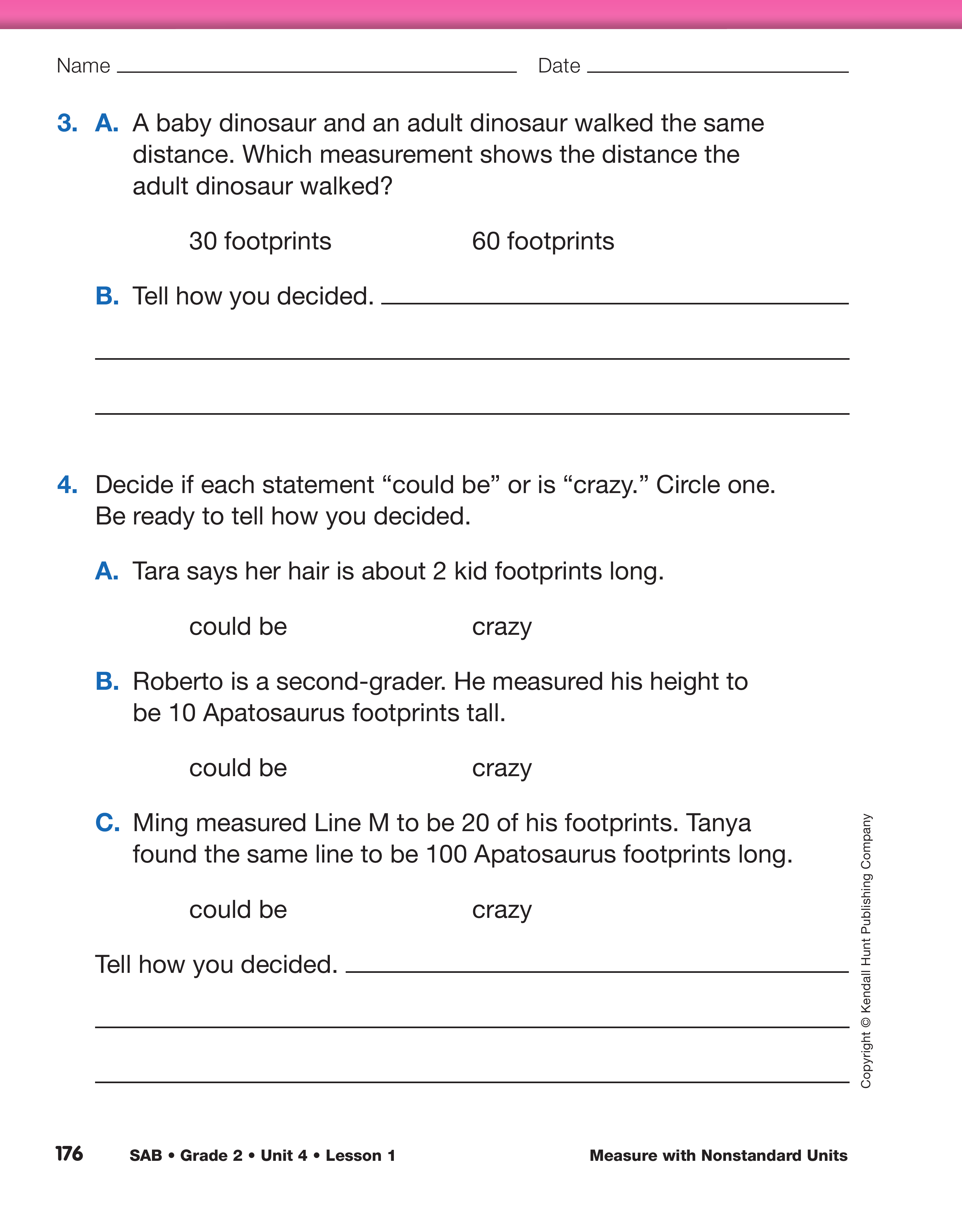Measure with My Footprints. Show students the
tape lines you prepared.
- Who would like to show how to measure the
length of Line A?
- What unit are you going to use? (Possible
response: palms, gorilla palms, footprints)
- Is there another unit that might be used? (Possible
response: footprints)
- Do you think it makes sense to measure the length
of Line A with fingerprints? (Possible response:
No, the unit is too small for this long line.)
- Do you think a footprint is a good unit to use? (Possible response: Yes. I think it is ok. A larger
unit might work too. A smaller unit might be too
small.)
- If I measure Line A with my footprints, and you
measure with your footprints, will we get the same
answers? Why or why not? (Possible response:
No, our answers will be different because our
footprints are different sizes.)
Ask a few students to demonstrate how to measure
Line A with their footprints.
- Did we all get the same measurement? (no) Why? (Because all of our units are a little bit different
in length.)
Direct students' attention to the display of the
Measuring Advice chart.
- Is there any advice that needs to be changed or
added? (Possible response: Place my feet heel to
toe rather than side by side; keep the units in a
straight line.)
Direct students' attention to the Measure with
Footprints pages in the Student Activity Book. Orient
students to the location of each line listed. Once
ready, ask students to measure the length of each line
with their footprints.
While students are working,
ask:
- What changes do you have to make to measure
the zigzag line, Line F?
- Is the line you're measuring closer to [9] footprints
or [10] footprints?
- Have you thought of any new measuring advice?
- What unit are you measuring in? (footprints)
Use Question 1 on the Measure with Footprints page in the
Student Activity Book to assess students' abilities to measure
a length using nonstandard units (e.g., footprints) [E6].
Measure with Apatosaurus Footprints. Show students
one of the Apatosaurus footprints you prepared.
- If a dinosaur came into our classroom and measured
the length of Line A, what would be different? (Possible response: It would take fewer
Apatosaurus footprints to walk Line A.)
- What would be the same? (The distance does not
change, just the measurement of that length.)
Give each student group two Apatosaurus footprints
to measure the length of each line listed on the
Measure with Footprints page.
Compare Footprint Measurements. Once students
have finished collecting their measurements, ask
them to work with a partner to discuss and complete
Questions 2–4.
Once students have completed the
questions, discuss student responses.
- Did you all get the same answer for Question 2? (Possible response: No, I compared the lengths in
my footprints and they compared using
Apatosaurus footprints.)
- Is Roberto's measurement in Question 4B a "could
be" or a "crazy?" (Possible response: crazy)
- Why? (Apatosaurus footprints are big and ten of
those would be taller than the height of the
room.)
- Have groups take turns using pairs of the Apatosaurus
footprint rather than making a pair for each group of
students.
- Ask each group to measure the length of two lines with
footprints rather than measuring all the lines. Collect the
measurements for each line on a display of the Measure
with Footprints page. Students can then compare their
measurements.
















